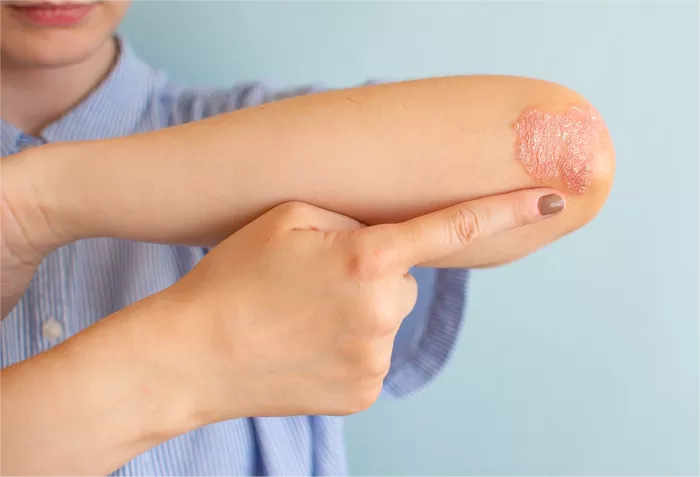Hives, also known as urticaria, are a common skin condition characterized by itchy, raised welts or bumps on the skin. They can appear suddenly, causing discomfort and often a sense of concern among those affected. Many individuals report experiencing hives during periods of hot weather, leading to questions about whether there is a direct correlation between the two. Exploring this relationship requires a deeper understanding of hives, their triggers, and how environmental factors, including temperature, can influence their occurrence.
What are Hives?
Hives are a manifestation of the body’s immune response triggered by various factors. They typically appear as raised, red, or skin-colored welts (wheals) that can vary in size and shape. These welts are often accompanied by intense itching, which can be distressing for those affected. Hives can appear on any part of the body and may come and go within hours, sometimes recurring over days or weeks.
Common Causes of Hives
Hives can be classified into two main types: acute and chronic. Acute hives are short-lived and often linked to specific triggers, while chronic hives persist for longer periods, often without a clear identifiable cause. Common triggers for hives include:
- Allergens: Foods (such as nuts, shellfish, or eggs), medications (like antibiotics or aspirin), insect stings, and pollen are typical allergens that can trigger hives in susceptible individuals.
- Medications: Certain medications, especially antibiotics and nonsteroidal anti-inflammatory drugs (NSAIDs), are known to cause hives in some people.
- Infections: Viral or bacterial infections can sometimes lead to the development of hives.
- Physical Factors: Exposure to heat, cold, pressure, or sunlight (known as solar urticaria) can trigger hives in some individuals.
- Emotional Stress: Stress and anxiety can exacerbate hives in susceptible individuals.
The Role of Temperature in Hives
One of the intriguing aspects of hives is their potential association with temperature changes, particularly exposure to heat. While it’s well-established that physical factors like heat can trigger hives (known as cholinergic urticaria), the relationship between hot weather and hives remains somewhat complex.
Cholinergic Urticaria and Heat
Cholinergic urticaria is a form of physical urticaria triggered by sweating, elevated body temperature, or emotional stress. Individuals with this condition often experience hives in response to activities that increase body temperature, such as exercise, hot baths, or exposure to warm environments. The precise mechanism behind cholinergic urticaria is related to the body’s response to increased sweat production and the subsequent release of histamine, leading to the characteristic hives and itching.
Heat and Non-Cholinergic Hives
Beyond cholinergic urticaria, hot weather can potentially exacerbate other forms of hives, although the direct causal relationship may be less clear. For individuals prone to allergic reactions or with sensitivities to heat or sunlight, exposure to hot weather can act as a contributing factor in triggering hives. This is particularly relevant in cases where heat exposure coincides with exposure to other allergens or triggers, amplifying the body’s immune response.
Sunlight and Solar Urticaria
Solar urticaria, a specific type of physical urticaria, is characterized by hives that develop in response to sunlight exposure. While not solely related to temperature, solar urticaria underscores the impact of environmental factors like sunlight and heat on certain individuals prone to hives.
Managing Hives in Hot Weather
For individuals prone to hives, especially those affected by heat-related triggers, managing symptoms during hot weather is crucial. Here are some practical tips:
- Avoid Heat Exposure: Stay indoors during peak sunlight hours and in air-conditioned environments when possible.
- Use Protective Clothing: Wear loose, breathable clothing to minimize skin irritation.
- Stay Hydrated: Drink plenty of water to help regulate body temperature and reduce the risk of heat-related hives.
- Take Cool Showers: Cool showers or baths can soothe irritated skin and help lower body temperature.
- Use Antihistamines: Over-the-counter or prescribed antihistamines can help alleviate itching and reduce the severity of hives.
Conclusion
In conclusion, while hot weather itself may not directly cause hives in all individuals, it can exacerbate hives in those susceptible to temperature-related triggers. Understanding the underlying causes of hives, including physical factors like heat, is essential for effective management and prevention. If you experience frequent or severe hives, consult a dermatologist or allergist to identify potential triggers and develop a personalized treatment plan. By taking proactive measures and avoiding known triggers, individuals can better navigate hot weather while minimizing the impact of hives on their daily lives.
Related Topics:

























